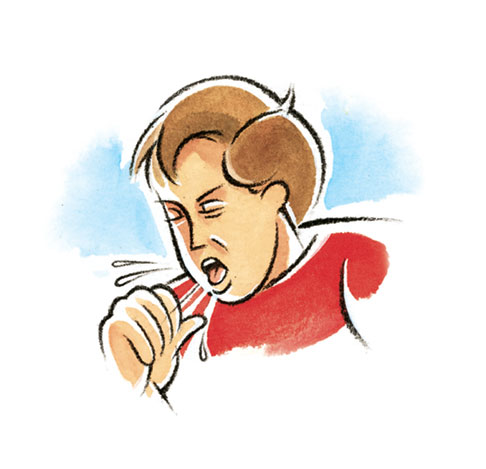Asthma Attack Management
 If asthma attacks are frequent, in spite of a diligent search for causative factors, and the first-line treatments are not adequate, management of the condition is much more difficult. The strongest anti-inflammatory drugs are cortisone derivatives. A short of adrenaline is the rescue medicine that works quickly, while oral cortisone derivatives are part of more long-term treatment. Because of serious side effects from long-term use, parents and doctors need to work closely together to make this adjunct of management as short-term as possible.
If asthma attacks are frequent, in spite of a diligent search for causative factors, and the first-line treatments are not adequate, management of the condition is much more difficult. The strongest anti-inflammatory drugs are cortisone derivatives. A short of adrenaline is the rescue medicine that works quickly, while oral cortisone derivatives are part of more long-term treatment. Because of serious side effects from long-term use, parents and doctors need to work closely together to make this adjunct of management as short-term as possible.
Room air filters that siphon out particulate matter (dust, pollens, molds) are available. If the house has forced-air heat, there are electric precipitators that can be installed into the heating unit. Particles are “charge” as they pass through, then precipitate on plates of the opposite charge; the plates can be removed and cleaned. If these measures fail to provide good control, desensitizing through the services of an allergist should be considered. Often, all allergist can work together with your personal doctor to avoid the confusion of not knowing whom to call when questions arise.
The subtle deterioration of the American diet over the past several decades is evidenced by the increase in the incidence of asthma, as well as its severity. The inflammation pathway is augmented by a marked decreased in the intake of antioxidants. Potent antioxidants found in vegetables and fruits are not as much a part of today’s diet as they should be. Vitamin C is said to be the major respiratory antioxidant, and those with low levels have a five-fold increase in asthma incidence. Vitamin E is also strongly correlated with lung function, and vitamin A has a strong influence on the health of cells that make up the respiratory tree lining. So, find the best acceptable diet available after eliminating sensitizing foods. Be sure to think of the substitute food or as a supplement (for example, the calcium of cow’s milk). Supplements of vitamins A, C, E and D should be added to the vegetable- and fruit-rich basic diet at the earliest age possible. Levels of selenium-glutathione peroxidase, a strong antioxidant enzyme made in the body, can be enhanced by providing additional selenium. The mineral selenium also prevents stress-induced damage to immune cells. If the child is not sensitive to fish, fish oil and its content of omega-3 fatty acids can provide relief from the inflammatory aspects of asthma. The huge capsules can be picked at both ends and the contents squeezed into a non-allergic juice – one or two a day, depending on the size of the child.
We have dealt with allergy problems by putting them into separate “signs and symptoms” categories, according to the area affected. Histamine release is responsible for swelling of membranes, excessive amounts of mucus, and itching – all very annoying. Of greater concern are the more serious conditions that can arise from immune system-mediated reactions: asthma, angioneurotic edema, and severe gastrointestinal symptoms.
In addition to identifying and eliminating all proven allergens, we should boost immune system function. More attention is being given to the inflammatory aspects of asthma and how, in infancy, the immune system can be influenced to follow the allergy route or the better pathway that defends against infection. More allergists are broadening their views and considering the part that food allergens and early, moderate exposure to an environment that is other than sterile might play. Old standards of thinking are falling, and better methods of diagnosis and treatment are slowly evolving.
Safe methods, such as large doses of vitamin C, along with the other vitamin supplement boosters, certainly should be “first line” treatments. As you find your child’s optimal and therapeutic amount of vitamin C, you will be able to phase out medical treatment. But don’t do this abruptly, especially if on a medical regimen for severe asthma.

